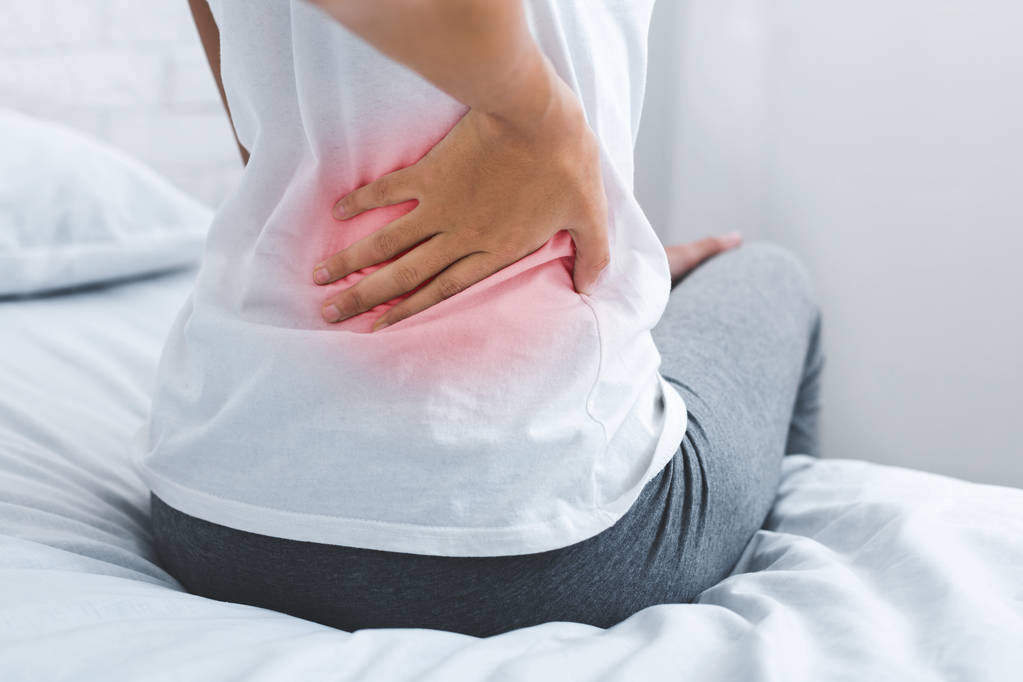Discover the duration of back labor pain compared to regular back pain in this informative article.
How Long Does Back Labor Pain Last Compared to Regular Back Pain?
Ah, the age-old question: how long does back labor pain really last compared to regular back pain? Well, my friend, buckle up because we’re about to dive into the world of backaches and timeframes. But don’t worry, we’ll make it fun along the way!

Understanding Back Labor Pain
Childbirth is a miraculous and transformative experience, but it’s no secret that it can also bring its fair share of discomfort. One particular type of pain that many women may experience during labor is back labor pain. This unique sensation occurs when the baby’s head applies pressure to the mother’s spine, resulting in a not-so-pleasant feeling that can make the birthing process even more challenging.
Back labor pain is often described as intense and localized discomfort in the lower back, which can radiate to the hips and thighs. It is different from the more common abdominal pain experienced during labor, and it can catch many women off guard.
Definition of Back Labor Pain
Let’s delve deeper into the mysterious world of back labor pain. This type of pain occurs when the baby’s head, during the process of descending through the birth canal, puts pressure on the mother’s sacrum and tailbone. The sacrum is a triangular bone located at the base of the spine, and it connects the spine to the hip bones. When pressure is applied to this area, it can cause intense discomfort and pain.
Imagine the baby’s head pressing against your spine, creating a sensation that is both uncomfortable and unforgettable. Back labor pain is often described as a deep, aching sensation that can be constant or come and go in waves, similar to contractions.
Causes and Triggers of Back Labor Pain
Now that we have a better understanding of what back labor pain is, let’s explore what actually triggers this unique experience. There are several factors at play, and it’s a combination of these elements that contribute to the joyride that is back labor pain.
One of the main causes of back labor pain is the position of the baby. If the baby is in a posterior position, also known as “sunny-side up,” their head is facing the mother’s abdomen instead of her back. This position can put extra pressure on the mother’s spine, leading to intense back pain during labor.
The strength and intensity of contractions can also play a role in back labor pain. If the contractions are particularly strong or frequent, they can cause increased pressure on the mother’s spine and exacerbate the discomfort she feels in her back.
Furthermore, the mother’s individual anatomy can contribute to back labor pain. Factors such as the shape of the pelvis and the position of the baby’s head in relation to the mother’s spine can influence the likelihood and severity of back labor pain.
It’s important to note that while back labor pain can be challenging and overwhelming, there are various techniques and positions that can help alleviate the discomfort. From changing positions, using heat or cold packs, to receiving massages, there are options available to help manage the pain and make the birthing process more bearable.
Understanding the causes and triggers of back labor pain can empower women to make informed decisions about their labor and explore different strategies to cope with the discomfort. Remember, every woman’s experience with back labor pain is unique, and what works for one may not work for another. The key is to find what brings you comfort and support during this incredible journey of bringing new life into the world.
Regular Back Pain: A Comprehensive Overview
Defining Regular Back Pain
Now, let’s shift gears and talk about good ol’ regular back pain. You know, that unwelcome guest who shows up after a long day of sitting or lifting heavy objects without using your knees (rookie mistake). Regular back pain can range from a dull ache to a sharp twinge, making life a bit more interesting, to say the least.
Imagine this: you wake up in the morning, ready to conquer the day, but as soon as you try to sit up in bed, a wave of discomfort washes over you. It’s that all-too-familiar sensation in your lower back, reminding you that regular back pain is here to stay. You gingerly make your way to the bathroom, hoping that a hot shower will provide some relief.
As you stand under the soothing cascade of water, you can’t help but wonder how something as mundane as sitting or lifting can lead to such persistent discomfort. It’s as if your back has a mind of its own, punishing you for every wrong move you make. But fear not, for understanding the common causes of regular back pain can help shed some light on this perplexing condition.

Common Causes of Regular Back Pain
Oh, the delightful ways we can acquire regular back pain! Poor posture, muscle strain from overexertion, and the simple passage of time can all contribute to this marvelous sensation. Who knew all these ordinary activities could lead to such extraordinary discomfort?
Let’s start with poor posture, shall we? Picture yourself sitting at your desk, engrossed in your work, oblivious to the fact that your back is slowly contorting into a C-shape. Hours pass by, and before you know it, your back is screaming in agony, reminding you of the importance of maintaining proper posture. It’s a lesson we all learn the hard way.
Now, let’s talk about muscle strain. We’ve all been there – attempting to move that heavy piece of furniture without enlisting the help of others. As you strain and struggle, your back bears the brunt of the weight, silently protesting against your stubbornness. And when the inevitable happens, and you feel that sharp twinge in your lower back, you can’t help but curse your impulsive decision-making.
Lastly, we have the simple passage of time. Ah, the joys of aging. As we grow older, our bodies undergo various changes, and unfortunately, our backs are not immune to the effects of time. The wear and tear of daily life slowly accumulate, causing our once resilient spines to become more susceptible to regular back pain. It’s a reminder that we are not invincible, no matter how young we may feel.
So, there you have it – a glimpse into the world of regular back pain. From the daily struggles of maintaining proper posture to the consequences of overexertion and the inevitable effects of aging, regular back pain is a constant companion for many. But fear not, for understanding the causes can help us navigate this discomfort with a little more grace and wisdom.
Duration of Back Labor Pain
When it comes to the duration of back labor pain, there are several factors that can influence how long it lasts. It’s not a one-size-fits-all situation, my friend. The strength and frequency of contractions play a significant role in determining the length of back labor pain. If those contractions are coming fast and furious, you might find yourself in the throes of pain for a shorter period of time. On the other hand, if the contractions are more spread out, you might be in for a longer ride.
But wait, there’s more! The mother’s pain tolerance also plays a part in the duration of back labor pain. Some women have a higher pain threshold and can handle the discomfort for longer periods, while others may find it more challenging to endure. It’s like a test of endurance, where each woman’s journey is unique.
And let’s not forget about the baby’s position in the birth canal. The way the baby is positioned can impact the duration of back labor pain. If the baby is in an optimal position, with their head facing down and their back against the mother’s belly, it may make the process smoother and potentially shorten the duration of back labor pain. However, if the baby is in a less favorable position, such as facing up or in a posterior position, it can prolong the pain.
Average Duration of Back Labor Pain
Now, let’s talk numbers. On average, back labor pain can last anywhere from a few hours to, brace yourself, even a couple of days. Yes, you read that right. It’s like a marathon, testing your endurance and strength. So, it might be a good idea to prepare some labor playlists to keep you motivated and distracted during this challenging time. Remember, though, that every birth is unique, and your experience may dance to its own rhythm.
Some lucky women might experience relatively short bouts of back labor pain, while others may find themselves in the midst of it for a longer period. It’s important to keep in mind that the duration of back labor pain is just one part of the birthing journey. The ultimate goal is to bring a beautiful new life into the world, and the pain will fade away as you hold your precious bundle of joy in your arms.
Duration of Regular Back Pain
Factors Affecting the Duration of Regular Back Pain
Alright, now let’s take a peek into the duration of our regular back pain companions. Factors such as the underlying cause, the individual’s physical condition, and how well they manage those pain levels can all play a role in how long the discomfort sticks around. Who knew our bodies were so full of surprises?

Average Duration of Regular Back Pain
Typically, regular back pain can come and go like that one friend who always promises to visit but somehow never does. It can last anywhere from a few days to a couple of weeks before bidding farewell, only to return when you least expect it. Isn’t life just full of delightful surprises?
Comparing Back Labor Pain and Regular Back Pain
Similarities and Differences in Pain Duration
Now, here comes the exciting part: let’s compare and contrast! Back labor pain tends to have a more concentrated duration, with the intensity peaking during contractions and easing up between them. On the other hand, regular back pain can be a bit more unpredictable, popping up whenever it feels like giving you a friendly reminder of its existence.
Impact on Daily Life and Activities
Oh, the joys of juggling life with back pain! Whether it’s back labor pain or its regular sibling, both can have quite an impact on daily life. From waddling instead of walking to avoiding heavy lifting like the plague, these delightful sensations can put a damper on your typical activities. But fear not, my friend, because there’s always a light at the end of the backache tunnel!
And there you have it, dear reader! The lowdown on how long back labor pain lasts compared to regular back pain. Remember, childbirth and regular back pain are unique experiences for each individual. So, embrace the journey, keep that sense of humor handy, and don’t forget to take breaks to indulge in some well-deserved back-pampering activities. Now, go forth and conquer those aches with a smile!



